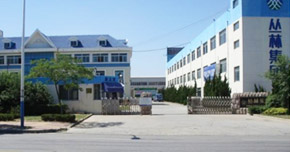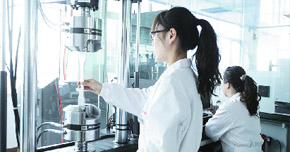The development of automobile lightweight is an inevitable trend, aluminum alloy materials will rise
In the opinions on slowing down the circulation and promoting commercial production issued by the general office of the State Council, it is mentioned that the aftereffect of automobile production should be released, and the regions where the restrictions on automobile purchase should be implemented should be combined with the actual situation to explore and promote the detailed measures to gradually relax or cancel the purchase restriction. The central government, which has the conditions, actively opposes the purchase of new power vehicles.
From the perspective of policy guidance, the automotive industry may usher in a recovery in the future. At present, the entire automobile industry has been greatly de stocked through channels. The industry's inventory has been at the bottom of recent years. With the end of de stocking, the cycle of adding inventory may be comforted by policies. There is no hope that the industry will recover.
As China's environmental protection policy has been increasing, the automotive industry's fuel emission standards are becoming more stringent.
According to the rules of the Ministry of industry and information technology, China's automobile carbon dioxide emission standard will be reduced from 155g / km in 2015 to 112G / km in 2020, while the fuel consumption of international passenger car enterprises will be reduced from 6.9l/km in 2015 to 5.0l/km in 2020.
However, from the future characteristics of the automobile industry, if only relying on the optimization of design can not meet the requirements of low consumption and emission reduction in environmental protection, so from the perspective of industry development trend, the lightweight of automobile body has become the only way to carry out in the future.
Specification for carbon dioxide emission from automobiles
Relevant research shows that there is a certain relationship between body weight and emissions. If the fuel vehicle mass decreases by 10%, the fuel consumption will be reduced by 8%, and the emission will be reduced by 4%. The carbon dioxide emission will be reduced by 5g / K for every 100kg reduction of vehicle mass. According to Alcoa, if the vehicle weight is reduced by 25%, the acceleration time can be reduced from 10s to 6S, and the lightweight vehicle will show the same or better performance under low traction load.
Body weight and emissions
This view is also applicable in the field of new energy vehicles. Because of the huge difference between the specific energy of battery and fuel in new energy vehicles, the weight of battery pack is generally more than 2 times higher than that of fuel engine. At present, the weight of battery system of electric commercial vehicle usually accounts for 10% ~ 15% of the total vehicle weight, while that of passenger car accounts for 20% ~ 30%, which directly leads to the weight gain of electric vehicle by 30% ~ 40% compared with traditional fuel vehicle. However, if the weight of pure electric vehicle can be reduced by 10%, the average driving range will be increased by 5% ~ 8%, and the loss cost can be reduced accordingly.
Therefore, whether from the emission reduction of traditional vehicles or from the development trend of new energy vehicles to increase the endurance, lightweight is an effective means.
At present, magnesium and aluminum alloy are two ideal materials for automobile lightweight. According to the report of the American aluminum society, if the car uses 0.45kg aluminum profile, the body weight can be reduced by 1kg. Taking BIW as an example, if aluminum alloy is used instead of steel and high strength steel, its body weight is 230kg, and the maximum weight can be reduced by 40%. However, magnesium alloy has better performance in weight reduction, because its weight is about 2 / 3 of that of aluminum alloy, which is only 153kg, and its weight reduction ratio can exceed 50%.
Car lightweight
Not only in weight, magnesium alloy also has the advantages of low density, high specific strength and specific stiffness, seismic resistance, easy recovery and easy processing. Compared with the same mass and similar interface components, the specific stiffness of magnesium alloy is 18.9 times of steel and more than twice of aluminum alloy, ranking first among the three lightweight metals.
Therefore, magnesium alloy material may be the most direct and effective way to solve the problem of automobile lightweight.
But at present, the world's magnesium production is declining as a whole (China's production is the largest, but limited by environmental protection). It is not realistic to replace the whole BIW with all magnesium alloy, but the idea of partial and gradual replacement is still feasible.
At present, the manufacturing cost of magnesium alloy has gradually decreased, and the processing technology has also made a breakthrough, which makes its application fields more and more extensive, and the demand has also increased. However, the automobile market is still the main driving force for its growth. Although China's automobile industry in 2018 was affected by many factors, the production and sales volume decreased year on year, and the growth rate dropped. However, new energy vehicles still maintain rapid development, and the production and sales volume maintain a rapid growth trend. According to the data of CAAC, the production and sales of new energy vehicles in 2018 were 1.27 million and 1.256 million, respectively, with a year-on-year increase of 59.9% and 61.7%. Therefore, there is still a large demand space for magnesium alloy in the automotive field in the future.
Sales of new energy vehicles
According to the statistical data in 2016, the average magnesium consumption of automobiles in China is about 3kg, which is far away from that in North America, which is 10kg. At present, China's automobile magnesium still mainly stays in the field of automobile steering wheel. In the future, the potential penetration space of instrument panel bracket, automobile wheel hub and automobile headlamp bracket is huge.
According to the route planning of China's automobile lightweight technology, China's single car magnesium consumption needs to reach 15kg, 25kg and 45kg respectively in 2020, 2025 and 2030. If the magnesium consumption per vehicle in 2030 needs to reach 45kg (only 3kg in 2016), the magnesium consumption for automobiles is expected to reach 1.72 million tons in 2030.
It is estimated that the weight of BIW made of all aluminum alloy is about 230kg, and the weight reduction effect is about 40%. The weight of BIW with high strength steel is about 383.3kg (230 / 0.6). If the amount of magnesium used per vehicle is 45 kg, the proportion is 11.7% (45 / 383.3), which is larger than that of carbon fiber. From the production point of view, the global magnesium production is mainly in China, but due to environmental protection, the overall output is certainly less than that of aluminum alloy. Therefore, the main material for BIW is aluminum alloy.
However, in terms of growth, magnesium consumption per vehicle in 2030 will increase by 3 times (45 / 15) compared with the preliminary plan for 2016-2020, while the consumption of aluminum alloy will not increase by 2 times (350 / 190).






